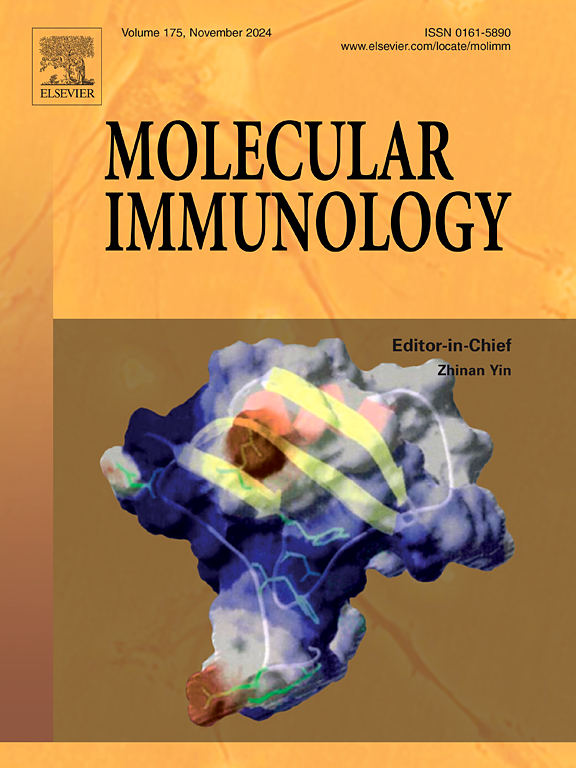Compound C1 reduced inflammation and activated autophagy in alveolar macrophages in mice
IF 3.2
3区 医学
Q2 BIOCHEMISTRY & MOLECULAR BIOLOGY
引用次数: 0
Abstract
The purpose of this study was to investigate the therapeutic effect of Compound C1 (Comp-C1) on lipopolysaccharide (LPS) -mediated sepsis acute lung injury (SALI) in vitro alveolar macrophage model and its regulatory mechanism. In vitro cultured mouse alveolar macrophages (MH-S) were treated with LPS. The expression and localization of transcription factor EB (TFEB) after LPS stimulation were detected. Then the cells were treated with LPS (1 μg/mL) and Comp-C1 (1 μM) for 24 h. RT-qPCR and Western Blot were used to detect the mRNA expression of inflammatory factors. Western blot was used to detect the expression of TFEB, lysosome-associated membrane protein 1 (LAMP1), P62 and microtubule-associated protein 1 light chain 3B (LC3B). TFEB-EGFP-Hela and mCherry-EGFP-LC3-Hela cells were used to detect the changes of TFEB nuclear expression and intracellular autophagic flux after Comp-C1 administration by immunofluorescence. The results showed that the expression of inflammatory factors was the highest after 1 μg / mL LPS stimulation for 24 hours. At the same time, the expression of TFEB gene and protein decreased after LPS stimulation, and the content of TFEB in cytoplasm and nucleus decreased by separating cytoplasmic and nuclear proteins. The content of LAMP1 decreased, and the expression of autophagy-related proteins reflected the inhibition of autophagy. After treatment with Comp-C1, the inflammatory factors were significantly decreased, the expression of TFEB and LAMP1 was significantly increased, and the expression of autophagy genes in the cells was restored. The up-regulation of TFEB nuclear expression after Comp-C1 administration was determined by TFEB-EGFP-Hela cells, and the recovery of autophagy flux and alveolar macrophage function after Comp-C1 administration was determined by mCherry-EGFP-LC3-Hela cells. Therefore, Comp-C1 can alleviate LPS-induced MH-S autophagy dysfunction and reduce inflammatory response by up-regulating TFEB in mouse alveolar macrophages, suggesting that Comp-C1 can be used as a potential drug for the treatment of SALI
化合物C1可降低小鼠肺泡巨噬细胞的炎症反应,激活其自噬
本研究旨在探讨复方C1 (Comp-C1)对脂多糖(LPS)介导的脓毒症急性肺损伤(SALI)体外肺泡巨噬细胞模型的治疗作用及其调控机制。LPS对体外培养的小鼠肺泡巨噬细胞(MH-S)进行处理。检测LPS刺激后转录因子EB (TFEB)的表达和定位。然后用LPS(1 μg/mL)和Comp-C1(1 μM)处理24 h。采用RT-qPCR和Western Blot检测炎症因子mRNA表达。Western blot检测TFEB、溶酶体相关膜蛋白1 (LAMP1)、P62和微管相关蛋白1轻链3B (LC3B)的表达。采用免疫荧光法检测Comp-C1给药后TFEB- egfp - hela和mCherry-EGFP-LC3-Hela细胞TFEB核表达和细胞内自噬通量的变化。结果表明,1 μg / mL LPS刺激24 小时后炎症因子表达最高。同时,LPS刺激后TFEB基因和蛋白表达降低,胞质和核蛋白分离使胞质和细胞核中TFEB含量降低。LAMP1的含量降低,自噬相关蛋白的表达反映了自噬的抑制。Comp-C1治疗后,炎症因子明显降低,TFEB和LAMP1表达明显升高,细胞内自噬基因表达恢复。通过mCherry-EGFP-LC3-Hela细胞检测Comp-C1给药后TFEB核表达的上调,通过mCherry-EGFP-LC3-Hela细胞检测Comp-C1给药后自噬通量和肺泡巨噬细胞功能的恢复。因此,Comp-C1可通过上调小鼠肺泡巨噬细胞TFEB,减轻lps诱导的mhs自噬功能障碍,降低炎症反应,提示Comp-C1可作为治疗SALI的潜在药物
本文章由计算机程序翻译,如有差异,请以英文原文为准。
求助全文
约1分钟内获得全文
求助全文
来源期刊

Molecular immunology
医学-免疫学
CiteScore
6.90
自引率
2.80%
发文量
324
审稿时长
50 days
期刊介绍:
Molecular Immunology publishes original articles, reviews and commentaries on all areas of immunology, with a particular focus on description of cellular, biochemical or genetic mechanisms underlying immunological phenomena. Studies on all model organisms, from invertebrates to humans, are suitable. Examples include, but are not restricted to:
Infection, autoimmunity, transplantation, immunodeficiencies, inflammation and tumor immunology
Mechanisms of induction, regulation and termination of innate and adaptive immunity
Intercellular communication, cooperation and regulation
Intracellular mechanisms of immunity (endocytosis, protein trafficking, pathogen recognition, antigen presentation, etc)
Mechanisms of action of the cells and molecules of the immune system
Structural analysis
Development of the immune system
Comparative immunology and evolution of the immune system
"Omics" studies and bioinformatics
Vaccines, biotechnology and therapeutic manipulation of the immune system (therapeutic antibodies, cytokines, cellular therapies, etc)
Technical developments.
 求助内容:
求助内容: 应助结果提醒方式:
应助结果提醒方式:


